Chénier La Salle’s biography includes international travel, law degrees, marriage, children, and the promotion of Canadian beef. It also includes one board game design, a game which happens to hold a special place in my heart.
New York 1901 is one of those early titles in my collection, a title that showed me something more than the games of my childhood and whispered to me the sweet nothings of the marriage of mechanics and theme. Area control, polyominoes, variable public objectives—these were relatively new ideas for me. We owned a few modern games with thematic potential in those days, but New York 1901 was the most approachable of the bunch and the one that saw the table the most.
The artwork from Vincent Dutrait brought the early 20th century vibe to life. We had been to New York City several times for various reasons, giving the setting a bit of heft in our collective memory. The mechanics captured a time of building and rebuilding with pizazz. The game just had a spirit that we enjoyed and still do.
Building a bigger, better apple
New York 1901 takes place over several blocks of lower Manhattan. Players each have a collection of polyomino buildings in bronze, silver, and gold, representative of the development of the age. The aim is to build, demolish, and build again according to the game’s objectives.
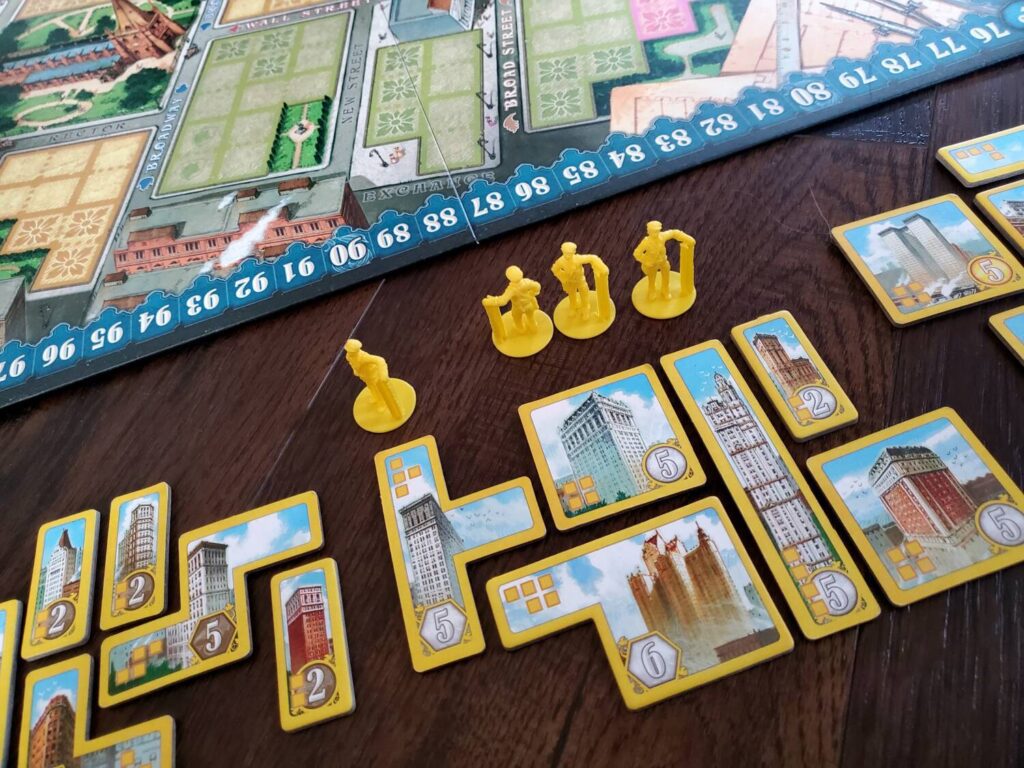
The first objective is to establish control of three chosen streets by constructing the most buildings during the game. Of course, this effort is not so straightforward as players often demolish their own structures in multiples, replacing them with singular—and potentially more lucrative—buildings. The landscape is ever-changing.
The second objective might be described as faithfulness to a hiccup. The game’s linear progression involves building bronze, then silver, then gold, with each age being unleashed by a milestone on the scoreboard. The hiccup will demand keeping bronze structures, or all three, or building based on shape rather than point value. This second objective effectively tinkers with motivations.
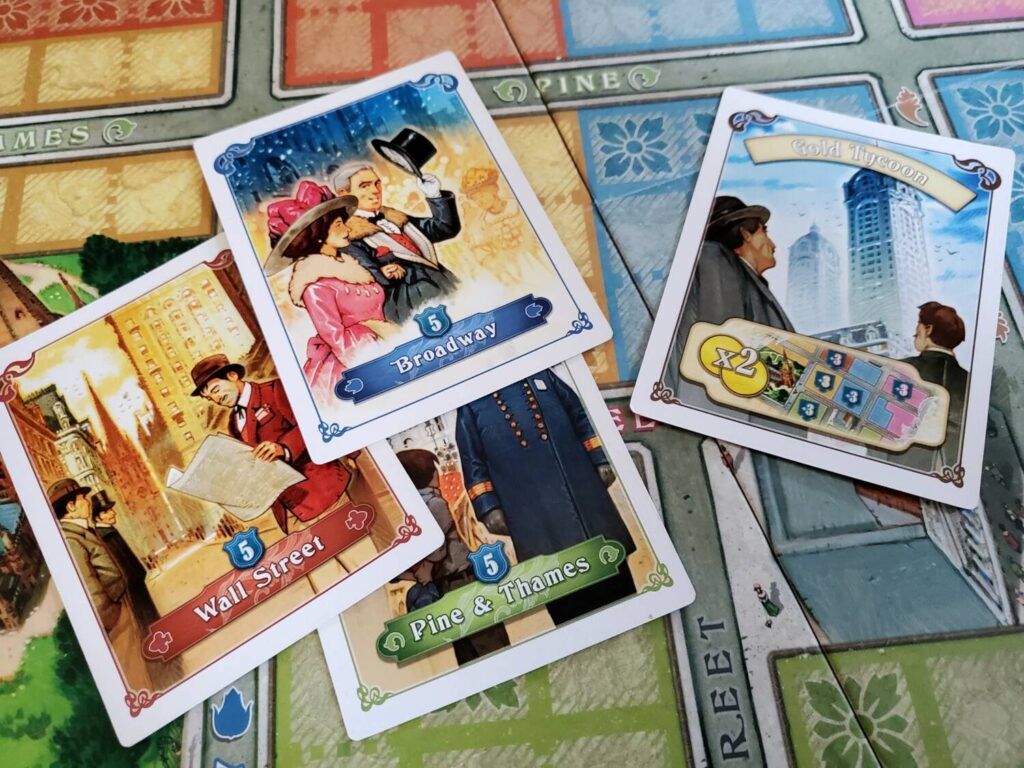
Along the way, players score based on their ability to add structures to the map. Expansion begins with cards. The map is cleverly designed with a grid of light and dark lines breaking the city streets into clusters of two and three squares. Players select cards granting ownership of a cluster. They then must either place one of their four workers in the cluster or build. The workers are placeholders for future construction (especially if a player is working toward a larger skyscraper), but they are limited and require thoughtful planning.
Rather than expand, players might instead choose to demolish existing structures to make way for a larger or more advanced project. Every new construction is a move along the score track and a step towards the end.
Casting a shadow of potential over the board, players have access to a common pool of legendary skyscrapers. These monsters cover city blocks and require the acquisition and potential demolition of several other buildings, but the payout is always worthwhile. It is a race to get the structure that fits the land, and potentially to interrupt another player’s ability to do the same.
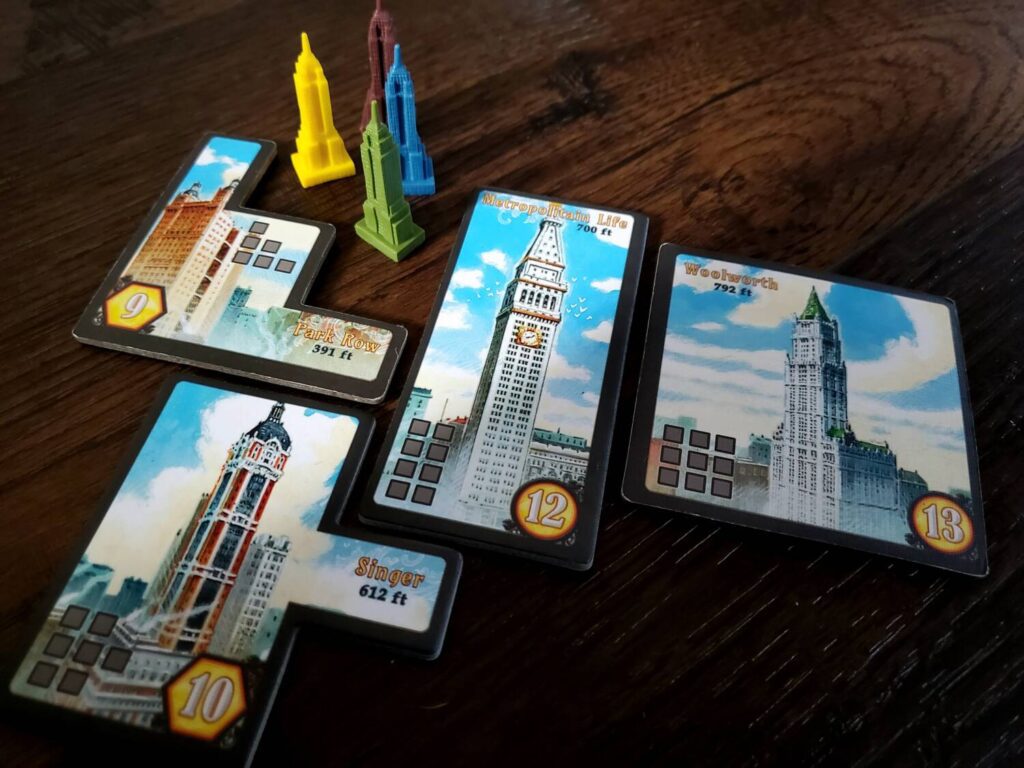
Players have a few matching special ability cards to exhaust during the game, cards that allow for combination moves and lucrative turns. As expected, these cards are worth a few points at the end if they remain in hand. When someone’s stock of buildings drops to four, the end is nigh.
It still works
In nearly every way, New York 1901 feels like a classic family game. The mechanics are simple, but there are decisions to make and stories to tell.
The selection of three streets for scoring gives the game an immediate tension as players try to gobble up land along those particular thoroughfares. By using polyomino shapes, though, the acquisition is not as straightforward as getting there first. Players usually have to acquire in multiple dimensions before building. The rotating marketplace of cards—like Ticket to Ride—is not always cooperative in the process, creating challenges and occasional frustrations.

The emphasis on streets, combined with the singular challenges, often put player desires at odds with scoring. Demolishing two bronzes in favor of one silver or gold will net points, but it also might shift control of a street and interfere with the need for obsolete structures. I love these sorts of calculated risks. The game is not so complicated that you can’t figure out what might work, but it is just tense enough that you’ll care and labor over a few choices.
Watching an opponent capture that first legendary structure is nerve-racking, generating a bit of pressure to catch up after the immense point boost. Being in that driver’s seat also opens the door to the possibility of playing spoiler by snagging a few needed cards. We aren’t the meanest family at the table, but I think it’s important that the stabby decisions linger in the background. For players who are into the cutthroat real estate game, it’s in the box.
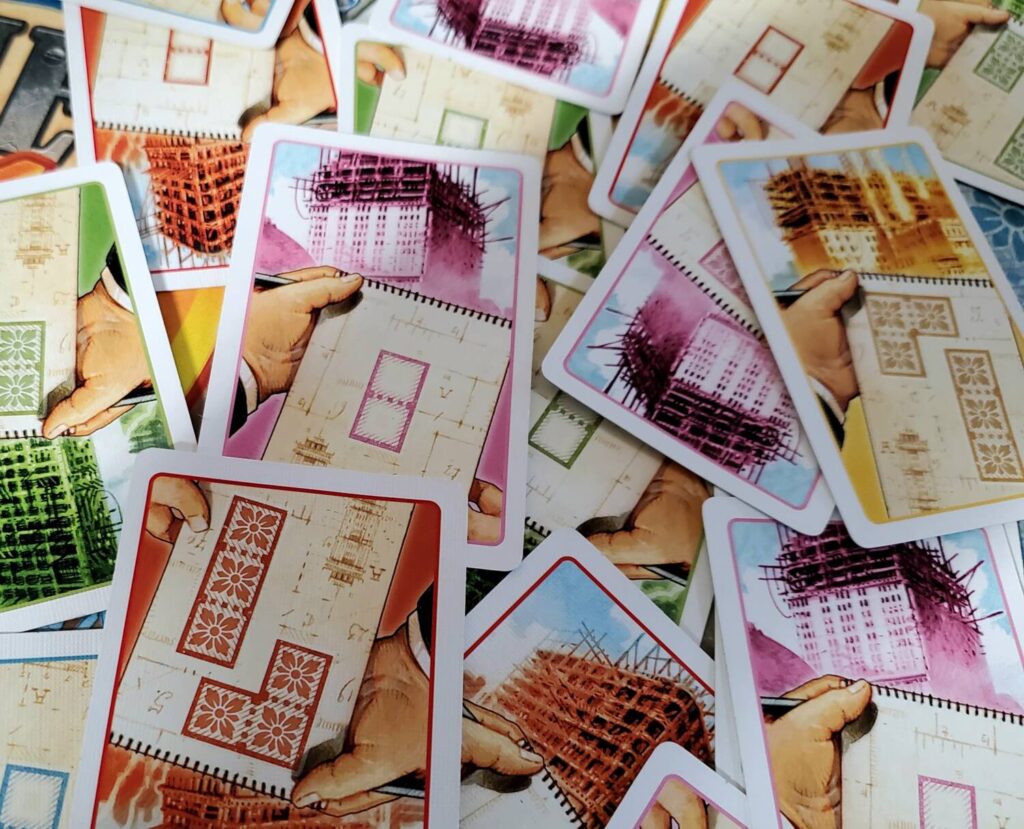
La Salle played this game hundreds of times with his family before it ever saw the light of day. That care shows in the final design. It’s just so clean. The only real detractor is its simplicity. New York 1901 will pull your thoughts in multiple directions, but not a dozen all at once. It is a rock solid and good game, even if not the most taxing.
Those extras
There are a few promos and bonus bits out in the wild. I do not own them. I have had my eyes on them for years but I’ve not yet pulled the trigger.
The Flatiron expansion adds one more legendary skyscraper, several challenge cards, and a strongarm ability to add a bit of dirt to the land acquisition proceedings. Of the three, I’m guessing this is the most seamless. Publisher Blue Orange also introduced Goons of New York, a module that gives special abilities to the players controlling the various territories on the map. Thematic and spicy, I’m sure. Rounding out the bonus materials, a set of pre-painted miniature workers replace the one-color game pieces. If I ever get my hands on them, I’ll update the review.
A lingering question
I have only one question when I think about New York 1901: why have we only seen one game from Chénier La Salle? I might be bold in saying so, but he created an instant classic. It’s not the sort that vies for the top spot on everyone’s all-time list, but it is the sort that you would expect to be on any family’s game shelf, a staple. I would rather New York 1901 were on every shelf than any of a dozen other games that typically live there.
As far as our collection is concerned, New York 1901 has yet to go obsolete.


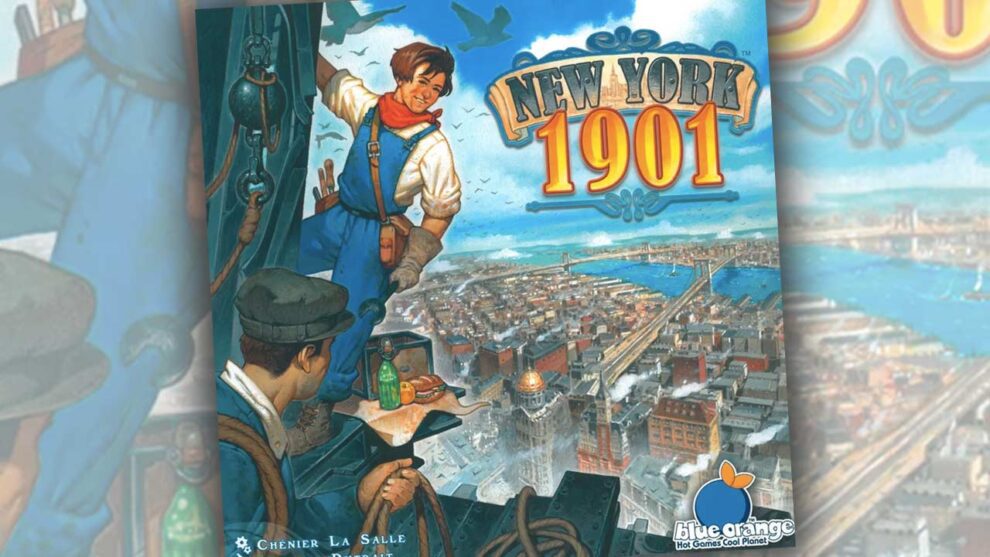


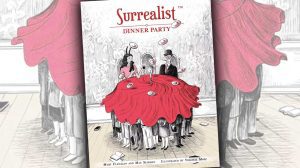






Wow! This looks like a lot of fun.
Have to see if I can fond one of these.